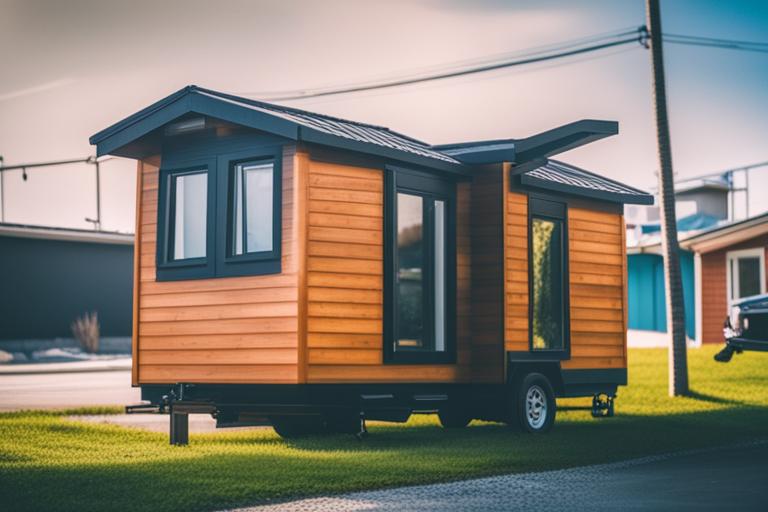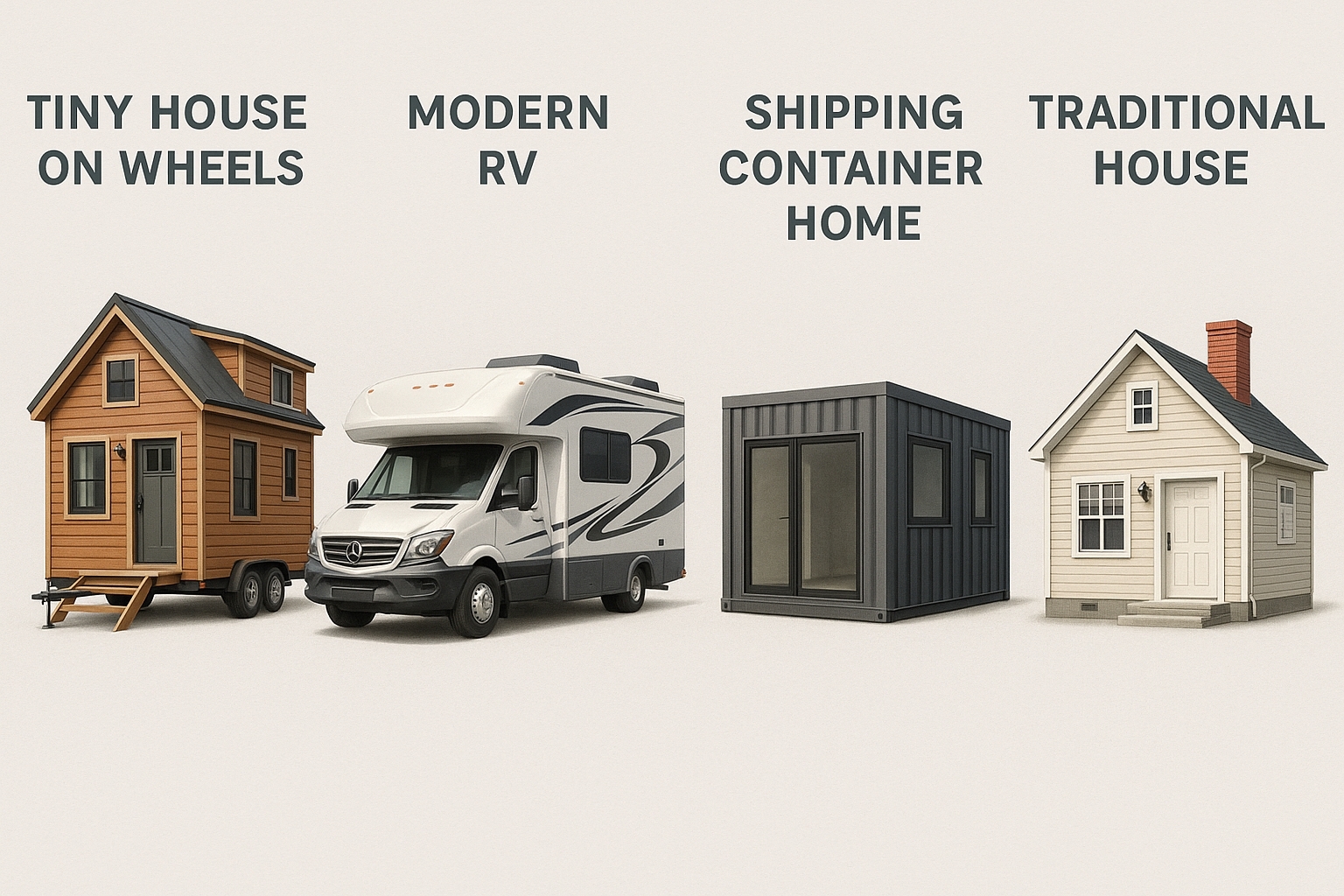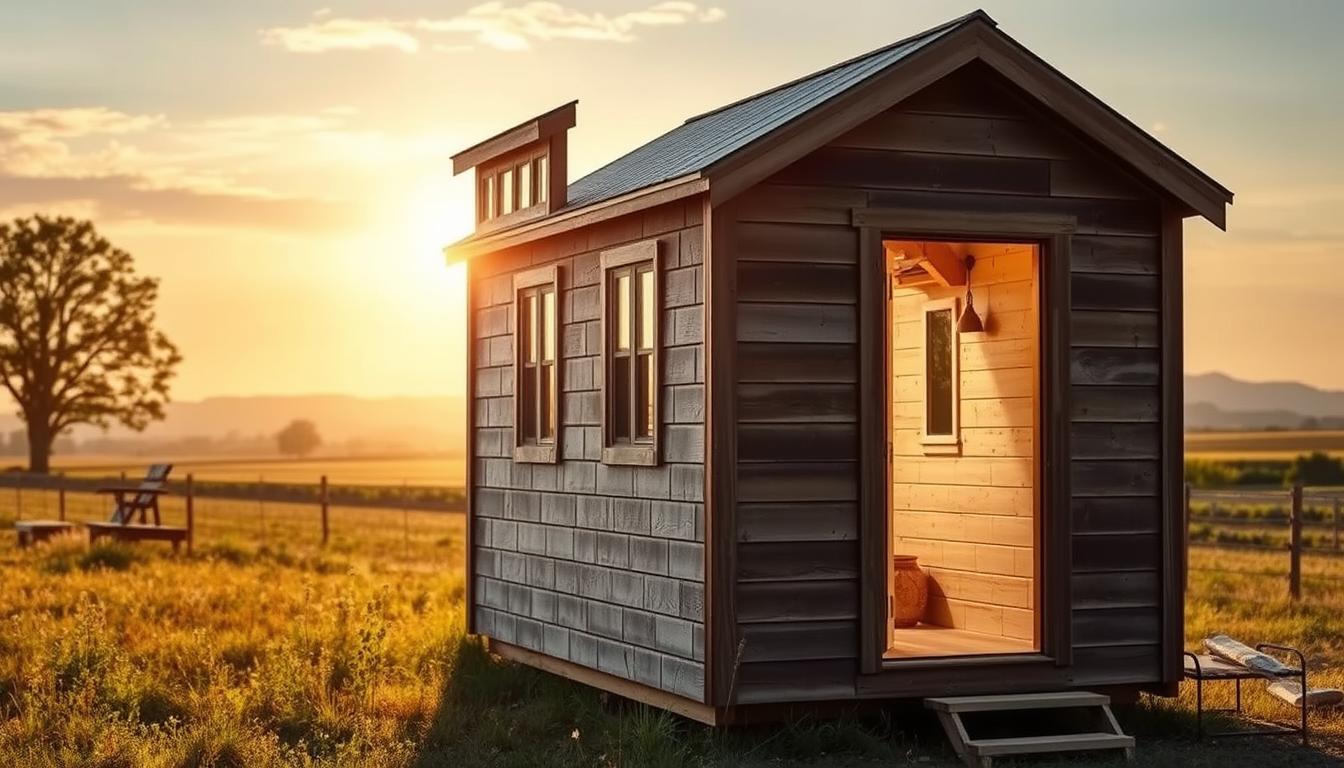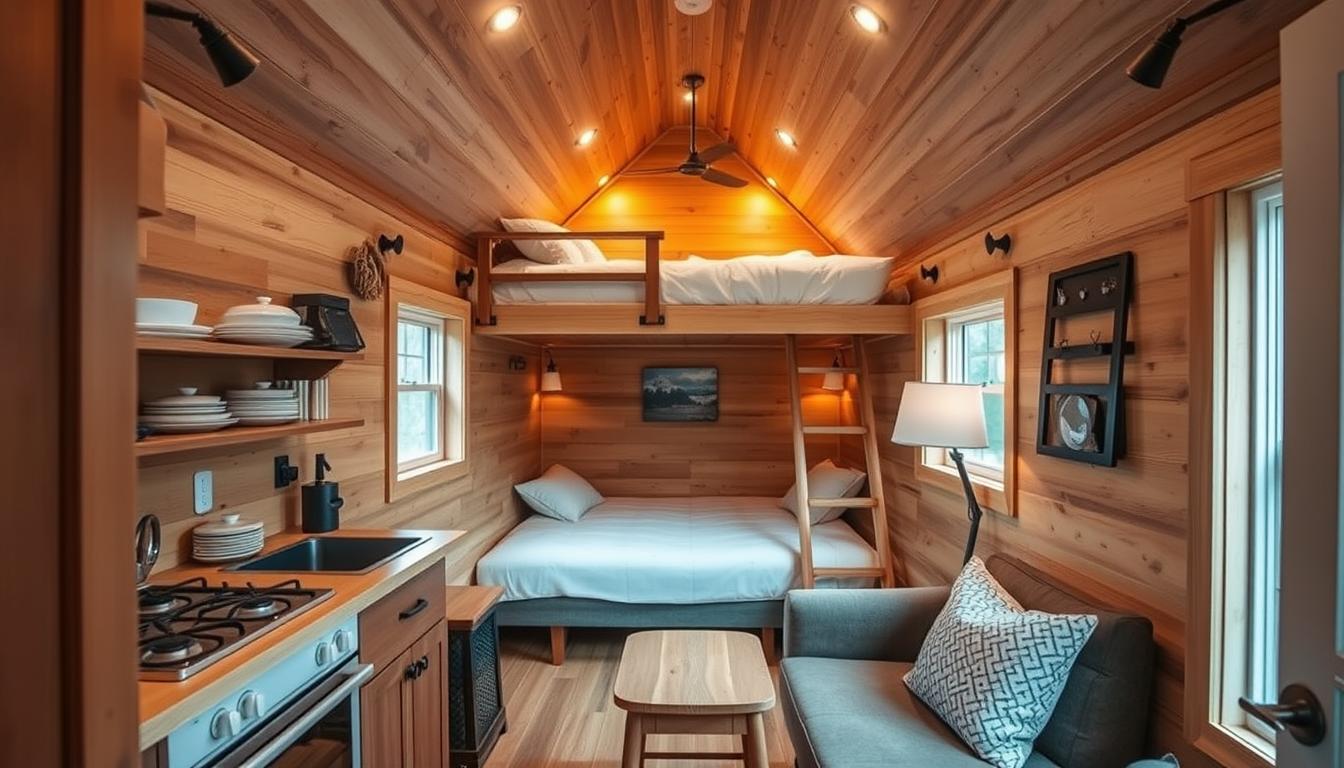Are you considering tiny house land rental, but you don’t have your own land to park it on? Renting land for your tiny home might be the perfect solution for you. In this guide, we will explore everything you need to know about finding, renting, and living on land for your tiny home.

Overview of Tiny House Land Rental
Tiny house land rental is the practice of leasing land to park or place your tiny home on. It’s a popular option for people who want to live in a tiny home but don’t want to purchase their own land or can’t afford to. Renting land gives you the flexibility to move your tiny home to different locations and experience different communities.
Benefits of Tiny House Land Rental
One of the main advantages of tiny house land rental is cost savings. Buying land to park your tiny home can be expensive, especially in desirable locations. Renting land can be more affordable, allowing you to save money on a down payment and mortgage payments.
Another benefit of tiny house land rental is flexibility. If you own your own land, you’re tied to that location. Renting land gives you the freedom to move your tiny home to different areas, whether it’s for work, family, or adventure.
Guide to Tiny House Land Rental
- Renting land for your tiny home comes with benefits such as affordability, flexibility, and a simpler lifestyle.
- Factors to consider when renting include zoning laws, utilities, amenities, location, and rental agreements.
- Finding land to rent can be done through online marketplaces, local classifieds, networking, and contacting realtors.
Factors to Consider When Renting Land for Your Tiny Home
Before embarking on tiny house land rental, there are several factors to consider to ensure that the land is suitable for your needs.
Zoning Laws and Building Codes
Zoning laws and building codes can vary widely from one location to another, so it’s essential to research the zoning laws in the area where you plan to rent land for your tiny home. Some areas may have specific requirements for tiny homes, such as minimum square footage, maximum height, and foundation requirements.
Insurance Requirements and Liabilities
Determine what insurance requirements the landowner has and what liabilities you may be responsible for.
Maintenance and Repair Responsibilities
Determine who is responsible for maintenance and repair of the land and any structures on it. This should be clearly outlined in the lease agreement.
Property Taxes and Assessments
Find out what property taxes and assessments you will be responsible for and ensure that they are included in your budget.
Size and Quality of the Land
Consider the size and quality of the land. Is it large enough to accommodate your tiny home and any additional structures or outdoor space you may need? Is the land level and free of hazards like rocks or tree stumps?
Utilities and Hookups
When renting land for your tiny home, you need to ensure that you have access to necessary utilities and hookups, such as electricity, water, and sewage. Some landowners may provide these services, while others may require you to arrange them yourself.
Access to Amenities
Consider the proximity to amenities like grocery stores, hospitals, schools, and other everyday necessities. You will want to ensure that the land is close enough to these amenities to make living there practical.
Location and Transportation
Consider the location of the land and the transportation options available to you. If you plan to commute to work, you will want to ensure that the land is conveniently located near public transportation or major highways.

Finding Tiny House Land Rentals
| Website | Description |
|---|---|
| Tiny House Listings | Tiny House Listings is a website that connects tiny house owners with landowners who are willing to rent their land. The website features a search function that allows you to filter by location and price range. |
| Try It Tiny | Try It Tiny is an online marketplace that connects tiny house owners with landowners who are willing to rent their land. The website features a variety of rental options, including private land, RV parks, and tiny house communities. |
| Hipcamp | Hipcamp is a website that connects people with unique camping experiences, including tiny house rentals. The website features a search function that allows you to filter by location, price range, and amenities. |
| LandWatch | LandWatch is a real estate listing website that features a section for land rentals. While it is not exclusively for tiny house rentals, it is a good resource for finding land for rent. |
| Craigslist | Craigslist is a classifieds website that features a section for housing rentals. While it is not exclusively for tiny house rentals, it is a good resource for finding land for rent. |
There are several ways to find tiny house land rentals, including online marketplaces and websites, local classifieds and ads, networking with local tiny house communities and groups, and contacting local realtors and property managers.
Online Marketplaces and Websites
Several online marketplaces and websites specialize in connecting tiny house owners with landowners who are willing to rent their land. Some popular options include Tiny House Listings, Try It Tiny, and Hipcamp.
Local Classifieds and Ads
Check local classifieds and ads for land rentals in your area. These can often be found in newspapers, online classifieds websites like Craigslist, or community bulletin boards.
Networking with Local Tiny House Communities and Groups
Joining a local tiny house community or group can be a great way to connect with other tiny house owners and find out about land rental opportunities in your area.
Contacting Local Realtors and Property Managers
Local realtors and property managers may be able to help you find land rentals in your area. They may have connections with landowners who are willing to rent their land to tiny house owners.

Negotiating a Tiny House Land Rental Agreement
When negotiating a tiny house land rental agreement, several factors need to be considered, including lease terms and conditions, rent payments and schedules, maintenance and repair responsibilities, and security deposit and insurance requirements.
Lease Terms and Conditions
Ensure that the lease agreement includes all necessary terms and conditions, such as the length of the lease, rent amount, late payment fees, and any restrictions or requirements.
Rent Payments and Schedules
Determine the rent amount and payment schedule that work best for you and the landowner. Some landowners may require monthly payments, while others may require quarterly or annual payments.
Maintenance and Repair Responsibilities
Determine who is responsible for maintenance and repair of the land and any structures on it. This should be clearly outlined in the lease agreement.
Security Deposit and Insurance Requirements
Determine if a security deposit is required and if you need to carry insurance on your tiny home or the land. This should also be clearly outlined in the lease agreement.
Legal Considerations for Tiny House Land Rental
Several legal considerations need to be kept in mind when renting land for your tiny home, including zoning laws and building codes, insurance requirements and liabilities, property taxes and assessments, and landlord and tenant laws and regulations.
Zoning Laws and Building Codes
Make sure that the land is zoned for residential use and that your tiny home meets all applicable building codes and zoning regulations.
Insurance Requirements and Liabilities
Determine what insurance requirements the landowner has and what liabilities you may be responsible for.
Property Taxes and Assessments
Find out what property taxes and assessments you will be responsible for and ensure that they are included in your budget.
Landlord and Tenant Laws and Regulations
Make sure that you understand your rights and responsibilities as a tenant and that the lease agreement complies with all applicable landlord and tenant laws and regulations.
Case Study: Overcoming Legal Challenges in Tiny House Land Rental
When Emily and her partner decided to downsize to a tiny home, they quickly realized that finding a place to park their home would be a major challenge. They searched for months, contacting local realtors and property managers, but were constantly turned away due to zoning laws and building codes that prohibited tiny homes on most properties.
Feeling discouraged, Emily and her partner decided to attend a local tiny house community meeting. There, they met a couple who had successfully navigated the legal challenges of tiny house land rental by working with a local attorney to create a lease agreement that met all legal requirements.
Inspired by this couple’s success, Emily and her partner reached out to the same attorney and began working on a lease agreement for a piece of land they had found outside of town. With the attorney’s help, they were able to create a lease agreement that satisfied all local zoning laws and building codes, and even included provisions for utilities and maintenance responsibilities.
Thanks to their perseverance and the help of a knowledgeable attorney, Emily and her partner were able to find and legally rent land for their tiny home. They now enjoy the benefits of tiny house living without the worry of legal issues.

Challenges of Tiny House Land Rental
While tiny house land rental can be a great option, there are some challenges to consider. These include difficulty in finding suitable land, navigating legal requirements and regulations, maintaining good relationships with landlords and neighbors, and dealing with unexpected issues and problems.
Difficulty in Finding Suitable Land
Finding suitable land to rent for your tiny home can be challenging, especially in desirable locations. Be prepared to spend some time searching and networking to find the right land for your needs.
Navigating Legal Requirements and Regulations
Navigating legal requirements and regulations can be time-consuming and confusing, especially if you’re not familiar with the laws in your area. Consider consulting with a lawyer or other legal professional to ensure that you’re complying with all applicable laws and regulations.
Maintaining Good Relationships with Landlords and Neighbors
Maintaining good relationships with your landlord and neighbors is essential when renting land for your tiny home. Be respectful of their property and privacy, and communicate openly and honestly to resolve any issues that may arise.
Dealing with Unexpected Issues and Problems
Be prepared to deal with unexpected issues and problems that may arise when renting land for your tiny home. This may include maintenance and repair issues, disputes with the landlord or neighbors, or legal challenges.
Conclusion
Tiny house land rental can be a great way to save money, gain flexibility, and experience new communities. By following the tips and guidelines outlined in this guide, you can find and rent land for your tiny home and enjoy the benefits of living in a small, sustainable space.
Start your search today and see where it takes you!
The author of this guide has a wealth of experience in the tiny house movement and real estate industry. With a Bachelor’s degree in Architecture and a Master’s degree in Real Estate Development, they have a deep understanding of zoning laws and building codes, as well as the practicalities of finding and renting land for tiny homes.
Their experience includes working with local governments to advocate for tiny house-friendly zoning laws and regulations, as well as advising clients on real estate investments and development opportunities. They have also conducted extensive research on the benefits and challenges of living in tiny homes, citing studies that show how downsizing and simplifying one’s living space can lead to a more sustainable and fulfilling lifestyle.
Through their work with local tiny house communities and groups, the author has gained valuable insights into the unique challenges of tiny house land rental, including navigating legal requirements, maintaining good relationships with landlords and neighbors, and dealing with unexpected issues. With this guide, they hope to provide readers with a comprehensive overview of the process and empower them to make informed decisions about renting land for their tiny homes.










